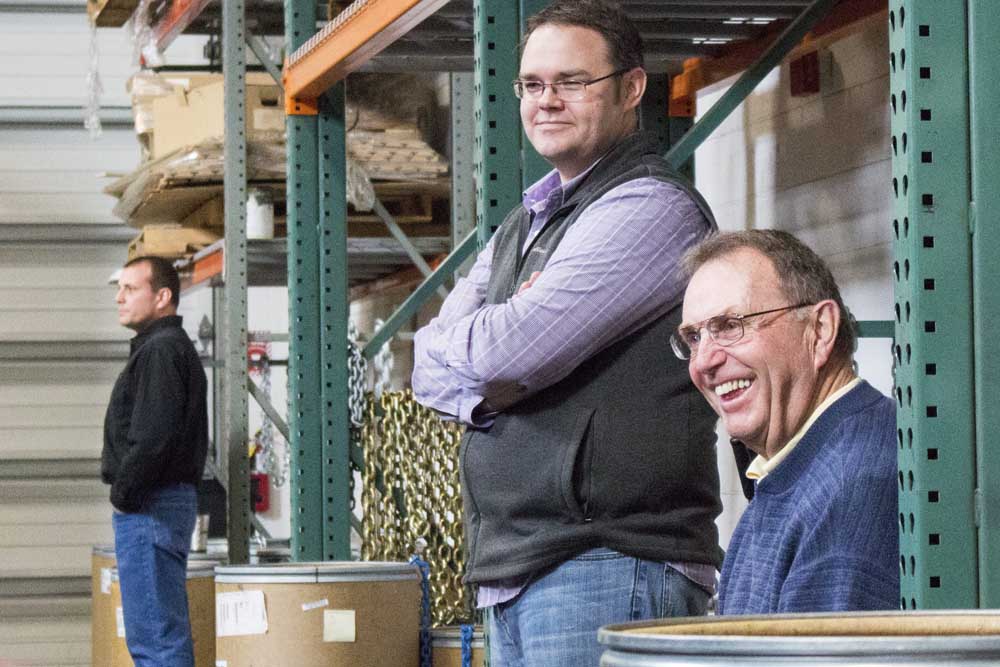ODOT looks for right angle to improve intersection
Published 5:00 pm Tuesday, September 6, 2005
Oregon Department of Transportation engineers designed Astoria’s notorious downtown couplet in the 1950s. Between Eighth and 16th streets, Marine Drive would be one-way west, Commercial Street one-way east.
Trending
Fifty years later, the design has produced a bottleneck of major proportions at Eighth and Commercial, and ODOT is searching for a good way to fix it.
A traffic advisory team put together by ODOT is working on a solution. Its second workshop is 4 to 6:30 p.m. Thursday at the Clatsop County Historical Society’s Heritage Museum at 16th and Exchange streets.
ODOT is involved because Commercial Street and Marine Drive are also U.S. Highway 30.
Trending
All options are on the table, from tearing down buildings for a new access route, to blocking off Commercial Street between the Post Office and the Courthouse and turning the area into a plaza.
A half-century ago, the couplet seemed like a good idea. Cars were smaller then. Not every family had even one, let alone several. Street cars were still running, and SUVs wouldn’t arrive on the scene for decades. The railroad handled much of the freight that now arrives by truck.
Today, traffic volume is greater than anyone could have predicted. Hardly anybody walks or even carpools, families have two and three vehicles, and all the freight that used to ride the rails now passes through downtown on trucks.
The problemThe cork in the couplet bottleneck is the sharp turn from Eighth Street onto Commercial. The intersection, headed toward gridlock for at least 20 years, has just about achieved it. These days it’s not uncommon for minivans and log trucks rounding the bend from Marine Drive to stack up all the way back to McDonald’s.
A recent ODOT truck study helps explain why. Released last month by Valerie Grigg Devis, project manager for transportation planning in ODOT’s Region 2, the study shows that on average almost 900 trucks a day pass through downtown Astoria, a third of them between 9 a.m. and noon. The big ones need both lanes to make the turn at Eighth street. So do big recreational vehicles.
Besides being tough on motorists, the intersection is hazardous to pedestrians, said Carole Richardson, ODOT’s Northwest area manager. Cars that go straight on Eighth Street instead of turning left, tend to fly through the Commercial Street intersection, gathering speed for the steep hill ahead. Meanwhile pedestrians are trying to cross to and from the Courthouse, the Post Office and the Flavel House. It’s a dangerous mix, and not a good way to welcome visitors to downtown Astoria, she said.
Getting it rightThe question is how to improve the situation. ODOT managers have spent weeks gathering answers from local citizens, holding workshops, addressing civic groups and talking with city leaders. During an ODOT presentation to the Astoria City Council Aug. 5, council members expressed interest in realignment of the intersection, along with concerns about removing any parking places downtown.
“We’re hoping Astorians will come up with a vision for what they want Astoria to look like,” said Bill Jablonski, ODOT’s Northwest area project leader, who joined Richardson and Grigg Devis in making the presentation to the council.
Jablonski said Thursday’s workshop will address short- and long-term solutions. They fall into three categories: Inexpensive short term improvements in the immediate area of the intersection, such as minor tweaking to striping and signage; changes that would enlarge the existing street grid pattern; and major realignment ideas, which could include removing buildings.
Many ideas have been put on the table. On Thursday, they’ll be winnowed down to the most promising. “We want to have the refinement from the folks,” Jablonski said, “the community, the civic leaders and business owners getting together to tell us what they’d like to see come to the top so ODOT can proceed.”
What about ‘values’?Jablonski said part of the workshop will be continuing a list of what he calls “values.” Some of those identified so far include a more car and pedestrian friendly Commercial Street; unobstructed access to the river; more of a “Main Street” feel for downtown; and eliminating the disconnect between the commercial side of downtown and the civic side (the post office and courthouse).
No matter what solution eventually is selected for improving traffic through downtown, Jablonski said it won’t affect the chances for the bypass or truck route that is supported by many community members.
“We’re being responsive to what’s listed on the city’s Transportation System Plan on fixing the safety and operational issues at Eighth and Commercial. The community should understand that any solution we come up with for Eighth and Commercial will not be a killer for any other alternative route that’s proposed through town,” Jablonski said.
Jablonski will analyze the ideas presented at Thursday’s workshop, and pick out the most promising ones to present at another workshop to be scheduled for October. Richardson said it’s important to remember that trade-offs will be a part of any solution.
“If we can acknowledge that upfront, we can all move forward,” she said.









